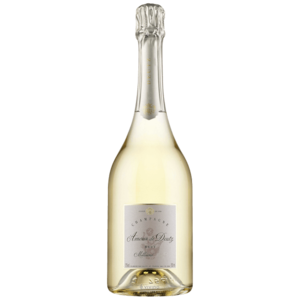Årgång 2011 enligt Champagne Club by Richard Juhlin
★★
Särskilt pinot noir och några tidigt mogna feta blanc de blancs från Côte des Blancs utmärkte sig det här året, medan pinot meunier drabbades hårdare av angrepp. Vintern kom ovanligt tidigt, redan i november föregående år, men en mild sen vår ledde ändå till en blomning redan i maj.
De stilla blandnings-vinerna hade en ganska tunn struktur och en störande ton av bubbelgum, men de färdiga är tämligen tunna och snabbmognande utan någon vidare god lagringspotential. Här finns en fin och behaglig silkighet och gräddig mjukhet som tyvärr slutar i en kort ointressant eftersmak utan stringens. Merparten bör konsumeras vid tio års ålder. Chardonnayvinerna är generellt betydligt mer mogna än de pinotdominerade vinerna som kommer att peaka om ett par år. De främsta exemplaren som släppts hittills är Larmandier-Bernier Vieille Vigne du Levant, Louis Roederer Rosé, Louis Roederer Blanc de Blancs, Belle Époque och Bollinger 007 Limited Edition samt allra främst Selosses soleraviner med bas från 2011.
-
2011 by Curtis Joseph
[no stars]
- Harvest: August 19th
- Total Sales: 322,951,807 btl
- Yield: 13,268 kg/ha (12,500 kg/ha AC)
- France: 181,623,158 btl
- Area under vine: 33,564 ha
- Export: 141,328,649 btl
- Average potential alcohol: 9.4%
- Prix Constaté : €5.60/kg
- Average total acidity: 7.4 g/l
- Average gluconic acid: 0.05 g/l
Overview: A challenging year.
2011 offered “Summer in the springtime, springtime in the summer, and then a return to summer in the autumn,” according to many in the region. A cold winter preceded the season, delivering plenty of frost and some incidence of hail. The period from March to May was dry and warm, and budbreak began in the first ten days of April. Flowering was also early and finished by the end of May. Because of this weather pattern, there was very little danger from downy mildew, although powdery mildew was a potential problem. The warm weather put the vines on track to harvest very early, with some predicting that the picking would start mid-August. However, rainy and cool conditions set in near the end of June. Wet, cool temperatures continued for most of July and August, interrupted by several short heatwaves. This type of weather slowed the growth of the vines, caused the berries to swell with water, and increased rot and mildew. Veraison began at the end of July. By mid-August, the incidence of botrytis in the thin-skinned Pinot Noir and
Meunier was close to 20% in some regions, although there was far less difficulty with the Chardonnay. There were relatively few vintage wines produced in 2011, even fewer that stood out. Some of the best examples were from growers who produce a vintage each year, such as Bérèche. Their Le Cran 2011 was among the most successful: “Fantastic concentration of apricot and peach aromas on the nose are followed by a balanced, accessible elegance on the palate and surprising length.” **** (Tasted 2019)

Lamiable Grand Cru Blanc de Noirs Les Meslaines Millésime 2011


